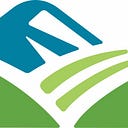Some students have more than a backpack weighing them down
District adopts new social-emotional learning curriculum
Some students arrive at school with more than just a backpack. Some are carrying deep emotional trauma alongside the normal worries of the school day. That’s why our district has just adopted a new curriculum that will help teachers support the social-emotional learning of all their students.
What is social-emotional learning?
Social-emotional learning is the process through which children and adults get the knowledge, attitudes, and skills necessary to understand and manage emotions, set and achieve positive goals, feel and show empathy for others, establish and maintain positive relationships, and make responsible decisions.
That’s a mouthful, but it’s not quite as mystifying as it might seem at first glance.
On one side, social-emotional learning is all about empathy. It gives students the ability to understand and regulate their own feelings and emotions while also recognizing feelings and emotions in others.
It also gives them the skills that are necessary to manage behaviors, effectively communicate with others, and build and maintain peer relationships. It teaches them that actions have consequences and why it’s important to take responsibility for their actions.
Most people would agree that these are fundamental skills for children to have, and that’s why social-emotional learning is a key part of our Strategic Plan.
“Social-emotional learning provides the opportunity for kids to acquire life-long skills in how to identify, understand, and manage their emotions. Not all kids come to school able to do that,” said Beth Mercer, a counselor Liberty Middle School.
With all this in mind, a task force was formed to find a new curriculum to help teachers and staff support their students’ needs. Counselors, social workers, teachers, and administrators all worked together to find a curriculum that would make a difference and be easy for teachers to use every day.
After a lot of research, the team landed on Second Step, which is a highly-effective, research-based curriculum that promotes school success, connectedness, and a respectful climate.
Second Step aims to prevent problem behaviors, peer rejection, impulsivity, antisocial behavior, and low academic achievement by developing students’ self regulation skills and social emotional competencies.
That’s why incorporating Second Step in the daily curriculum is so important. It provides a common language for all students that follows them from elementary to middle school.
“The districts and buildings throughout the country that are using this program, what they’re finding is that they have massive reductions in behavior issues, massive reductions in suspensions, you’re also seeing an increase in attendance,” said Kelley Boynton, Bethel’s Executive Director of Elementary Schools.
Liberty Middle School is piloting the program this year, and early results have been very positive.
“We teach the lessons in advisory and the teachers love it, because it’s all right there for them,” Mercer said. “It’s very easy to implement and the kids are already lighting up with it. We’re seeing great success.”
The primary goal is to help students, but in order to be effective the program needs to be convenient for teachers. Second Step meets that requirement.
“It requires very little to no planning,” said Boynton. “It takes roughly five minutes a day, and then there’s a 20–25 minute lesson per week.”
What about high school students?
Though Second Step is intended for elementary and middle school students, social emotional learning is still critical at the high school level. That’s why steps have been made to enhance what is already in place, and add a new curriculum or program in the future.
“Last year we convened a task force with counselors, teachers and administrators and we looked at our scope and sequence of our advisory curriculum. We made some revisions and we’ve adjusted some of the lessons,” said Chad Honig, Bethel’s Executive Director for Secondary Schools. “This coming year we are going to do a book study with that task force about social emotional learning and what that looks like in a high school. Through that book study we will then look at curriculum or a program and will make a recommendation next year.”
